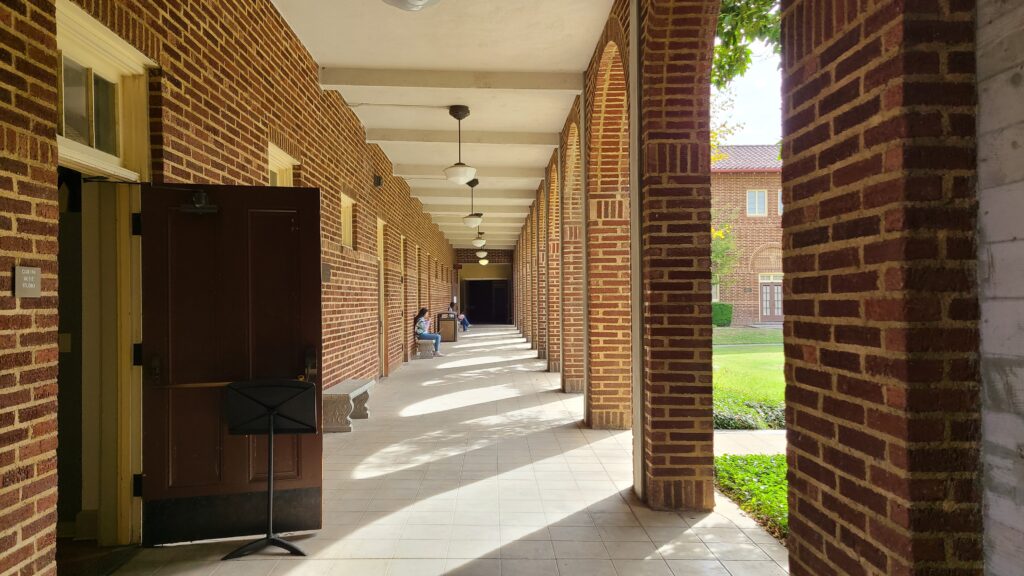
Fresno City College campus
Fresno City College campus
The overreliance on undersupported part-time faculty in the nation’s community colleges dates back to the 1970s during the era of neoliberal reform — the defunding of public education and the beginning of the corporatization of higher education in the United States. Decades of research show that the systemic overreliance on part-time faculty correlates closely with declining rates of student success.
Furthermore, when faculty are equitably compensated and thus able to provide high-quality student-faculty engagement in and out of the classroom, students succeed at significantly higher rates.
Over the past 40 years, only 30% of the California Community Colleges faculty have been hired as full-time employees, while the remaining 70% have been hired as part-time (adjunct) employees who teach the majority of the system’s courses. Part-time and full-time faculty have the same qualifications and teach the same courses and students.
Nonetheless, part-time faculty do not have job security, often teach at several different colleges, struggle to earn a living wage, are generally not paid for office hours, and are not compensated equally for the same work as their full-time counterparts. This two-tiered structure was never meant to be permanent. It has deprived students and colleges of having a fully supported faculty, and has mostly remained hidden from the public.
It is time for the California Community Colleges to address the hypocrisy at the heart of its institutions: decades of disinvestment from the faculty and thus, students. Transitioning from a two-tiered to a nontiered — unified faculty — model will better serve the students, colleges and the state of California. The concept of a unified faculty emphasizes the elimination of the two employment tiers — part-time and full-time — to create a nontiered structure.
This model is based on faculty and collegewide unity as opposed to the current structure that has produced a divided faculty, inequitable service to students, and stagnant or diminishing student outcomes. The K-12 system and the Vancouver model at Vancouver Community College exemplify education systems structured around a unified faculty model.
A unified faculty model would vastly improve student success rates and the efficiency of the California Community Colleges by prioritizing student-faculty engagement in and out of the classroom, ensuring a culture of academic freedom, increasing the number of faculty participating in college governance and institutional effectiveness processes, fulfilling the system’s civic engagement mission to prepare Californians to become active participants in the state’s democratic processes, and increasing college and systemwide fiscal stability.
In 1988, AB 1725, a landmark community college bill, codified in California education law the goal to have 75% of its credit instruction taught by full-time faculty. Given its overreliance on an undersupported part-time faculty, however, the system has never come close to achieving this goal. The fact that the state established such a goal and has invested in some yearly budget increases to improve part-time faculty conditions indicates California’s awareness of the problem and interest in addressing the inequities of the two-tiered model.
Taking inspiration from the Vancouver model, many of the California Community Colleges’ system partners and stakeholders have been preparing to launch a systemwide transition to a unified faculty model. While the creation and adoption of legislation could also support this transition, legislation is not necessary for a transition to begin at the college level. Individual colleges, for example, could pilot a unified faculty model to demonstrate its efficacy.
A statewide transition to a unified faculty model will require leadership and coalition-building among the statewide faculty unions, academic senate, Faculty Association of California Community Colleges, the Chancellor’s Office, and other stakeholder groups.
In the past two decades, the California Community Colleges system has undergone significant “reform,” narrowing students’ educational opportunities and shrinking the student body by more than 1 million students. For example, remedial instruction, English as a second language programs, and lifelong learning courses have been cut or severely reduced without public debate.
During this period, the system’s student outcomes have declined, stagnated or only slightly improved despite decades of so-called reform efforts. Furthermore, the system has not successfully met its transfer, employment, or equity goals over the past five years. After decades of narrowing the student experience, defunding instructional programs and curriculum, and deprofessionalizing the faculty, the community college system has failed the California public.
Investing in a unified faculty model would remedy the California Community College system that is currently struggling to bring back the millions of students who have been pushed out of their colleges. Prioritizing the faculty’s vital role in students’ lives, California will set a precedent for a truly inclusive and equitable educational system that will empower millions of students to positively impact the economy and democracy of California, the nation and the world.
•••
Debbie Klein is an anthropology professor at Gavilan College in Gilroy and a former president of the Faculty Association of California Community Colleges.
The opinions in this commentary are those of the author. If you would like to submit a commentary, please review our guidelines and contact us.


